I am a PhD student at The Open University and I am currently in the extraordinarily lucky situation that a part of my research is published and gains quite some attention from the research community and media alike. The study has been led by one of my supervisors, Tamsin Edwards, former lecturer at The Open University, now at King’s College London. On top of this coincidence the timing happened to be in a way that I was long enough in my studies to be part of this encounter. After all it seems to be about being at the right place, at the right time with a sufficient set of skills which made this possible. So let me explain what we learned in this study and how that is related to what the media picked up.
Where it started
The motivation of this work was a Nature paper by Rob DeConto and David Pollard in 2016 who predicted up to ten times higher sea level contributions from Antarctica at the end of this century than previous estimates. Maybe not completely surprisingly, this had a huge impact and ended up as one of the most discussed scientific papers of the year. But the interesting thing about this 2016 paper is not only that the predictions are much higher, but formally unclear reason as to why they are. There are two new aspects to it: first they added a new mechanism to their model which represents high ice cliffs collapsing under their own weight, and the second aspect is to learn from two periods in earth history, about three million and about 120 000 years ago where the global mean sea level was several meters higher than today.
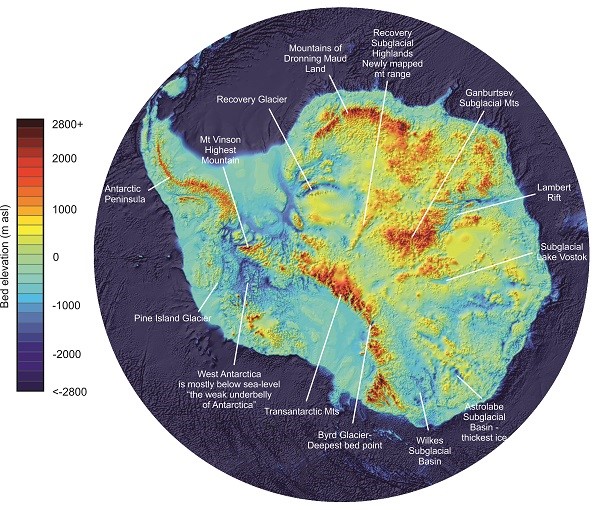 Fig. 1 | Bedrock topography. Bedmap-2 dataset (Fretwell et al., 2013) compiled from different observations with labels of important locations.
Fig. 1 | Bedrock topography. Bedmap-2 dataset (Fretwell et al., 2013) compiled from different observations with labels of important locations.
The proposed new mechanism is called Marine Ice Cliff Instability (MICI), not to be confused with the established Marine Ice Sheet Instability (MISI) which are both positive feedback loops (science slang for a self-sustained process: if the result is undesired, as in this case, you can also call it a vicious cycle). ‘Marine’ in both MISI and MICI refers to glaciers which are based on bedrock below sea level and there are large parts of Antarctica where the bed is actually deepening upstream along the glaciers (blue areas in the interior of Fig. 1).
What happens for the established MISI hypothesis is that if the transition from floating ice shelves to grounded ice sheets, called the grounding line, retreats for any reason then the ice at the new grounding line position is thicker because of the slope of the bedrock. Ice flow tends to be faster if the ice is thicker at the grounding line which means that the transport of ice across the grounding line will increase as well. This increased transport can cause an imbalance (more ice flows into the ocean, where it ultimately melts but the amount of snowfall stays the same), which again will lead to a thinning of the glacier and with it a further retreat of the grounding line. There is a robust theoretical basis and strong observational indications that MISI is currently underway in West Antarctica where the deepest bedrock troughs can be found. It has been started in this region by warmer water reaching the base and melting the ice. Whether this is caused by human activity is unclear. This region has, in the long run, the potential to increase global mean sea level by about three meters.
The newly hypothesized instability MICI is based on the idea that tall ice cliffs of more than about 100m above the water line are structurally unstable. A collapse of the unstable cliff would lead to another high cliff which would be unstable as well. This could lead to very rapid and widespread runaway retreat of the ice sheet. Modern observational evidence for MICI is indirect: an absence of ice cliffs taller than 100 m and rapid retreat of the front of the Jakobshavn (Greenland) and Crane (Antarctic) glaciers. Proposed historic evidence of it is weak and there is some discussion on how likely it is to happen at all. For example, trials with high resolution ice sheet models indicate that after the creation of an unstable cliff the ice might be able to spread out quickly. This could create a stable slope as well as a supporting floating ice shelf which would suppress high cliffs and cancel out a further retreat by MICI.
As there are no direct observations of MICI, the 2016 paper tested different representation of MICI on estimates of past sea level contributions from Antarctica. Those estimates are based on ocean sediment cores and have quite some uncertainty.
Revisiting Marine Ice Cliff Instability (MICI)
So what did we add to this and how does it justify statements like “future sea level rise could be much lower than previously feared”? The first issue with the original study is that the number of different model setups used, including the number of different MICI representations is quite limited. Some of the published predictions were based on as little as 15 different setups, and while this is enough to provide a mean it is not enough to give a robust estimate of an upper bound. Imagine for example that you role two dice 15 times and note the combined number of spots every time. The mean will probably be fairly close to seven (the true value) but you might not get a single 12 (which has a probability of 1 in 36 per roll) or you might have rolled two or even more of them. The problem here is that when it comes to sea level rise and risk assessment it is this upper tail which is really important. When building a sea wall you do not want it to be high enough only 50% of the time, you want it to protect you constantly. At the same time it would be overly expensive and disruptive to build sea walls unnecessarily high.
We could just run the original model more often, but it is very computationally expensive (i.e. slow), and even if this were not the case the authors might have increased the resolution before the number of setups. This is where statistical modelling comes into play. It might sound boring or scary at first but it is actually a very neat technique. What we did is to develop a model which imitates the ice sheet model. A model-model if you like, but for clarity we call it an emulator instead. So this emulator uses the original ice sheet model runs to learn how it behaves and can then be used to make sea level predictions on its own. Instead of 15 dice rolls we can now emulate thousands of them and can come much closer to the real probability of 1 in 36 for getting a 12. We also added modern satellite observations to the mix. We found that for a very high greenhouse gas emission scenario the probability of the sea level contribution from Antarctica alone being more than 1 m by year 2100 is 36%, much less than previous interpretations of 65%.
New Predictions
Crucially we also find that the emulator is still able to reproduce historic and modern sea levels even when MICI is turned off. This means that MICI is not necessarily a thing at all, even though we cannot rule it out either.
Now that we know that MICI did not necessarily take place in the past, it is worth having a look at the future predictions without MICI. This is illustrated by Figure 2 for different climate scenarios (colors). Turning off MICI reduces the Antarctic sea level contribution from within the shaded areas to the bold areas. In fact if we compare these lower predictions with previous estimates from other studies without MICI they agree very well. We also see an evolving difference between different climate scenarios even without MICI at about 2070. Therefore the only way we can avoid substantial melt and associated sea level rise from Antarctica is rapid, widespread and sustained climate action (represented in black).
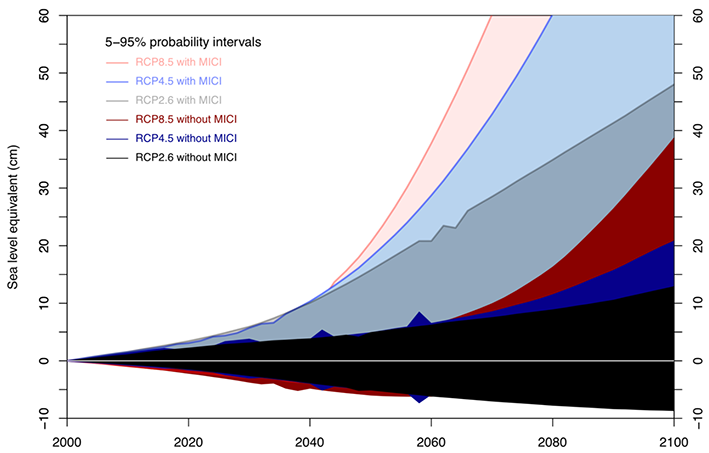 Fig. 2 | Impact of ice cliff instability. The projected 5%%u201395% probability intervals for Antarctic sea-level contributions are shown with and without the original MICI representation. RCP 8.5,RCP 4.5 and RCP 2.6 represent very high, intermediate and very low greenhouse gas emission scenarios, respectively. Figure reproduced from Edwards et al. 2019.
Fig. 2 | Impact of ice cliff instability. The projected 5%%u201395% probability intervals for Antarctic sea-level contributions are shown with and without the original MICI representation. RCP 8.5,RCP 4.5 and RCP 2.6 represent very high, intermediate and very low greenhouse gas emission scenarios, respectively. Figure reproduced from Edwards et al. 2019.
To summarize, the only reason for the 2016 study to predict much higher sea level contributions is a newly hypothesized marine ice cliff instability. Using statistical methods we find the worst case scenario to be less threatening than previously assumed. There is furthermore no clear evidence that this instability took place in the past and even if it did we are not confident we have a robust implementation for predictions yet. If it is turned off, there is a reassuring multi-model agreement with sea level contributions from Antarctica most likely staying below 43cm for high emissions scenario and below 23 cm for low emission scenarios. And therefore we think that “future sea level rise could be much lower than previously feared”. All these numbers are on top of other contributions to global sea level from e.g. Greenland and the expansion of the oceans when they become warmer.
Like oceans? Take it further
Free resources:
Our modules:
Our qualifications:
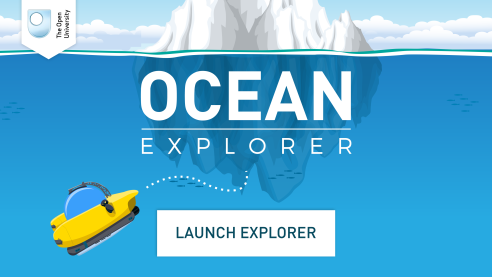

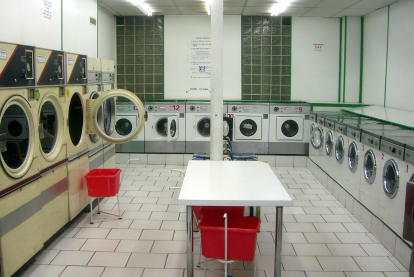
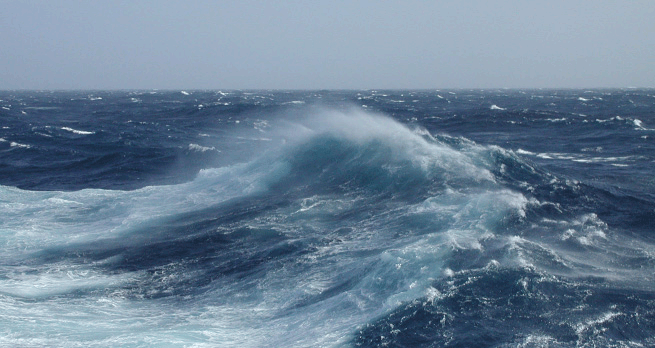
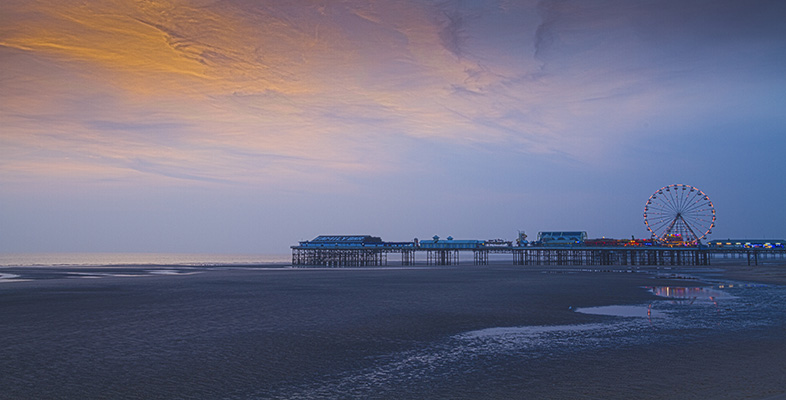

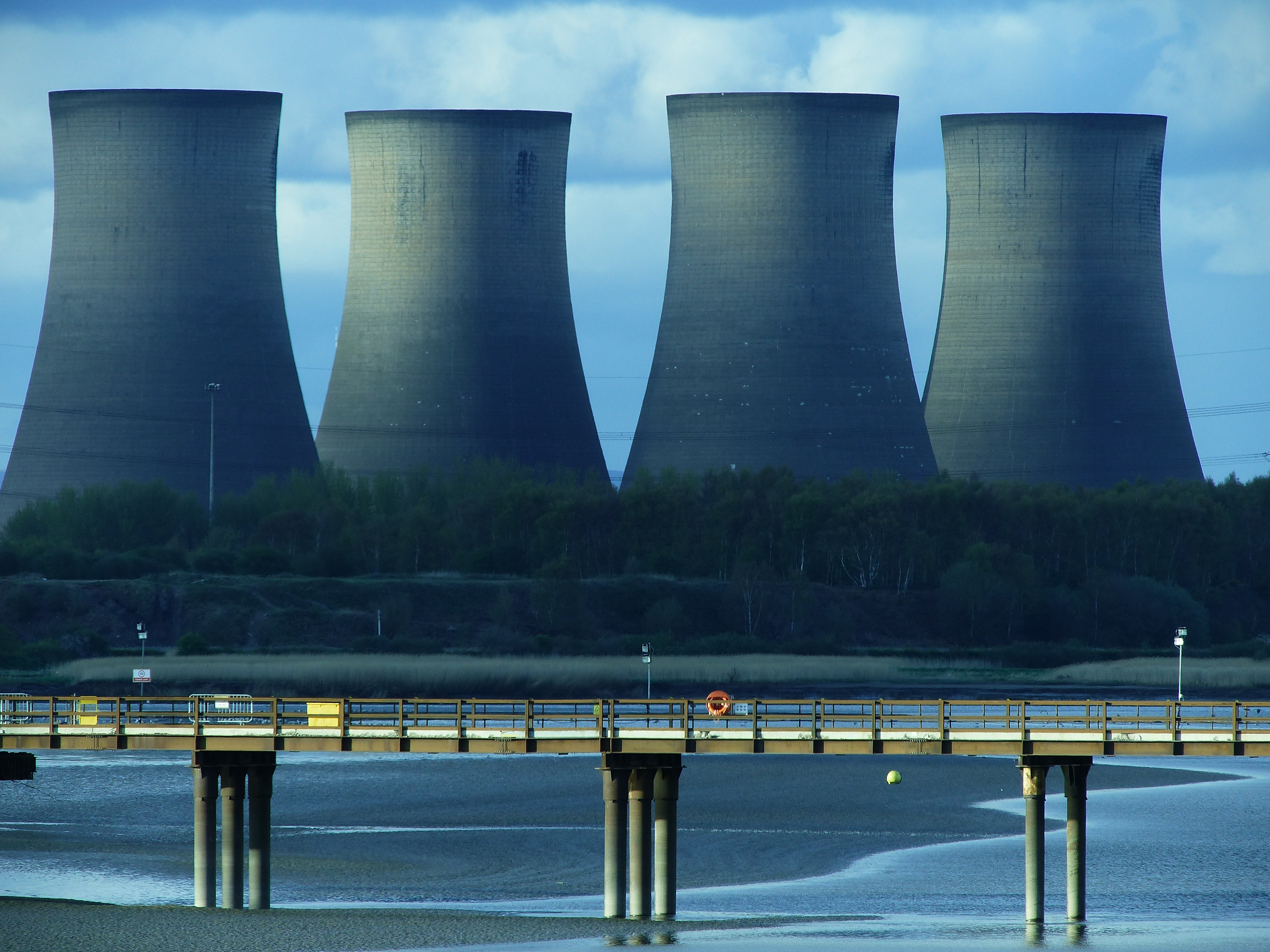
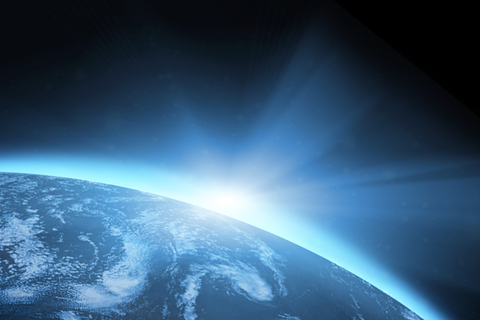
Rate and Review
Rate this article
Review this article
Log into OpenLearn to leave reviews and join in the conversation.
Article reviews